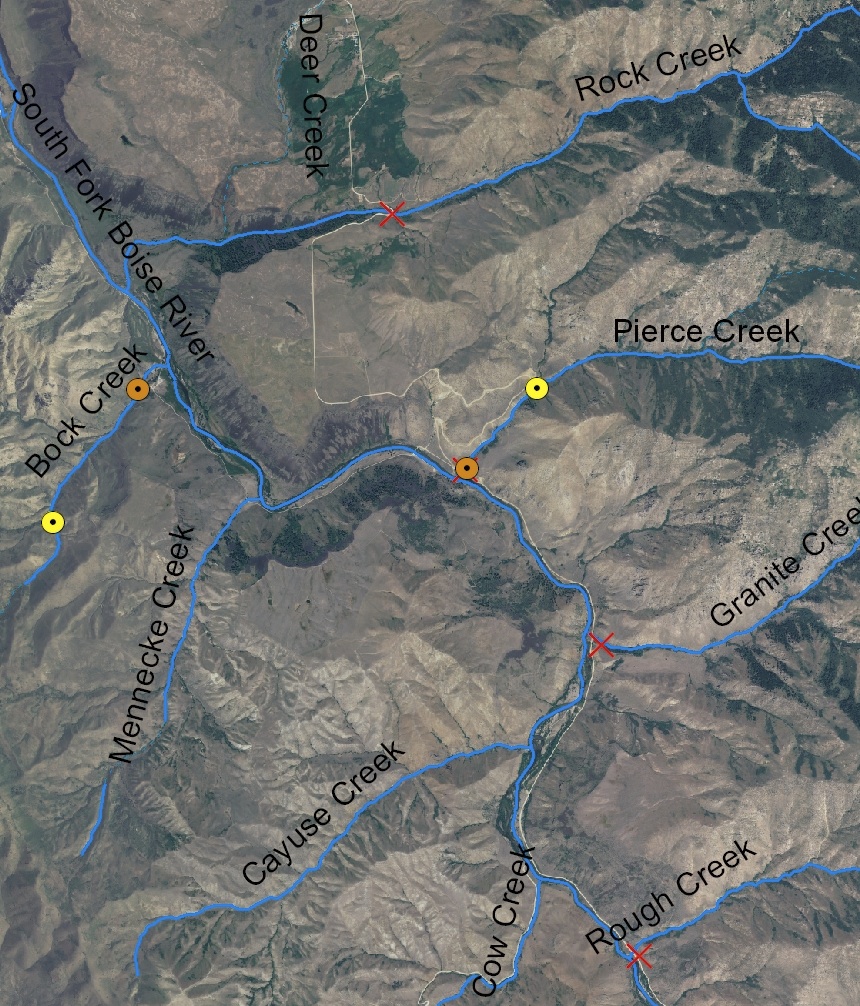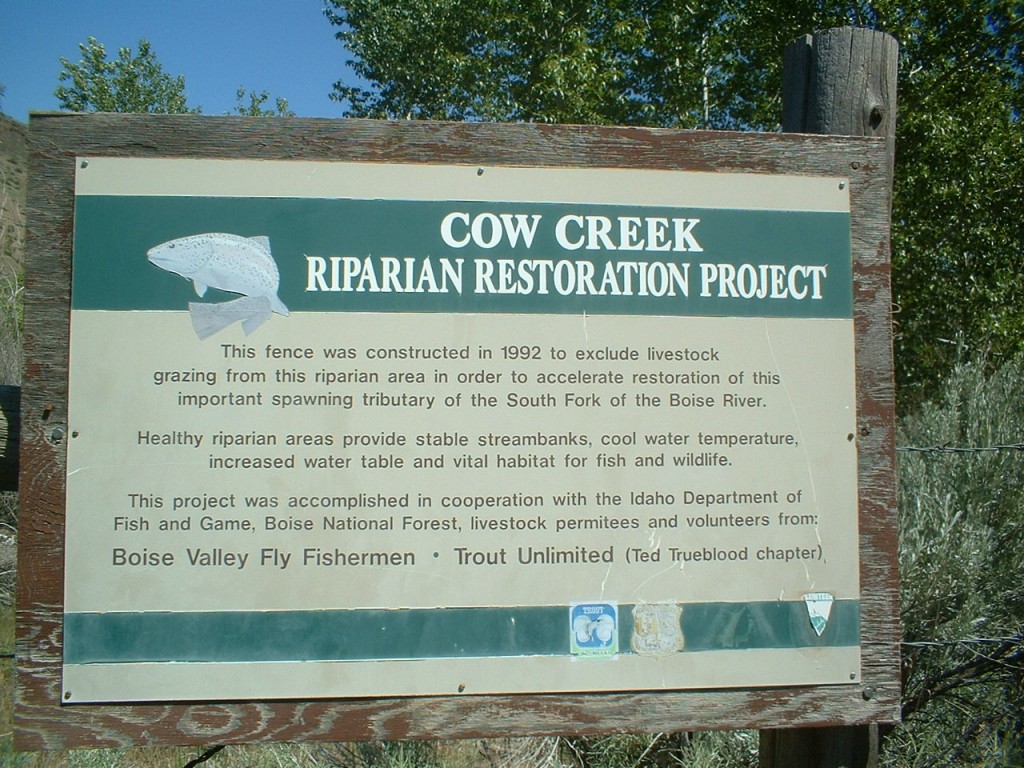After several posts about the Pierce Creek culvert removal project it’s appropriate to step back and have a look at the role of these tributaries in the South Fork Boise River fishery.
 It would be uncommon — to say the least — that people who fish the SFB go there to fish one of the tributaries. Many anglers may not even know these small streams exist. Some may be attracted unwittingly to the confluence zone of these streams with the SFB to find rising fish, or good holding water provided by structure in the river channel.
It would be uncommon — to say the least — that people who fish the SFB go there to fish one of the tributaries. Many anglers may not even know these small streams exist. Some may be attracted unwittingly to the confluence zone of these streams with the SFB to find rising fish, or good holding water provided by structure in the river channel.
Small streams play an important role in the health of a trout fishery.
First, they contain a significant amount of stream length and therefore habitat than may be at first realized. Even a trickle of water can still provide some holding water in small pools for fish, especially those young-of -year. Second, during certain times of the year, such as spring and early summer, the flows in these streams swell and more water can mean more habitat – space for fish to live.
Aside from the direct role of additional habitat, these small streams also provide the main channel with food sources, both the macroinvertebrates, the bugs in the water, and the litter from trees, brush and grass, energy inputs for the stream’s food web.
The other thing these small streams provide to the South Fork are the nonliving or abiotic things like silt, sand, gravel, boulders and then some. It is no coincidence that the most recent changes to the SFB river channel came from the tributaries: in 1987 the blowout on Cow Creek led to a big debris flow that created pool and pocket water habitat (and you often see anglers working that water), and in January 1996 some thousands of yards of rubble came down the Rough Creek drainage, blocking the river and creating backwater and a narrow rapid channel.
So what do we know about how the fishery in these tributaries? In 2010 Idaho Fish and Game conducted some electrofishing in a number of them and the recently published some results. We have uploaded the report on our website. It’s worth a read.
In a nutshell, the tributaries provide limited habitat potential under current conditions where there are blockages to migration. The study recommended that Pierce Creek culvert removal would be one of the most effective actions, and that’s what we just did!
Other tributaries were examined and there are further issues to investigate such as the water temperatures and water diversion issues with Rock Creek, the largest tributary.
 Looking back several years the local fishing and conservation clubs worked in the early 1990s to fence a section of Cow Creek and thus improve the riparian habitat. Cow Creek has other problems, like the effects from the road that is adjacent to it, but there are fish that have been known to have spawned in it. In fact, a look at a 35 year-old report shows the contribution of the tributaries for spawning. The section starts at page 33.
Looking back several years the local fishing and conservation clubs worked in the early 1990s to fence a section of Cow Creek and thus improve the riparian habitat. Cow Creek has other problems, like the effects from the road that is adjacent to it, but there are fish that have been known to have spawned in it. In fact, a look at a 35 year-old report shows the contribution of the tributaries for spawning. The section starts at page 33.
So what is next after Pierce Creek? The agencies and fishing clubs are looking at the options and sorting through which tributaries present the best bang for the buck. Money for culvert replacements does not come easily, despite the rather quick achievement for Pierce Creek. And the benefits of some tributaries needs to be examined prior to jumping into the next project. Stay tuned for more information on future projects.






